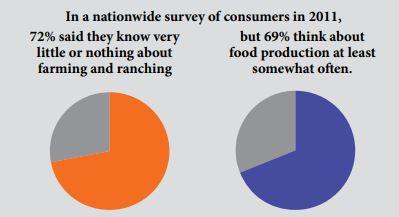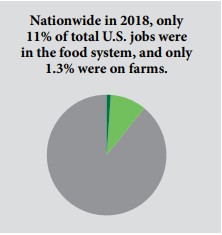


Agricultural literacy and food literacy are important because increased knowledge of agriculture and food can help Vermonters make informed choices, as both consumers and civic actors, that support their health, their communities, and the environment. A variety of barriers currently prevent us from achieving an economically robust food system that provides dignified compensation for its producers and workers, protects the environment, and produces healthy products for consumers. One barrier is a culture of cheap food that prioritizes low prices at the expense of social and environmental values. Culture is a complex and dynamic system, subject to change as new information, new values, and new frameworks emerge and gain popularity. While knowledge alone will not result in immediate changes to our food system, it is a key ingredient: knowledge contributes to attitudes, social norms, purchasing habits, and, eventually, policy. The ongoing disruptions from the COVID-19 pandemic shine a spotlight on national food supply chains, and more consumers are understanding the vulnerabilities of the existing food system.
Agricultural literacy and food literacy exist on a continuum of food system knowledge related to how food is produced and consumed. The value of agricultural literacy is in how people understand the labor, resources, and expertise necessary to produce raw agricultural products. This can lead to a greater appreciation for the value of food, including the importance of farmers receiving compensation that matches their costs of production. Agricultural literacy means understanding the nuances and policies related to how different production practices can have implications for workers, livestock, health, and the environment (see Agriculture and Food Policy brief). It can also foster higher tolerance of the sights, sounds, and smells associated with living near farms.
Food literacy is associated with an understanding of the health implications of our food choices, as well as the preparation of food, while food system knowledge is a more holistic understanding of the multiple stages of the agricultural and food supply chain, from production through processing, distribution, and consumption. A food systems lens is inclusive of environmental and social considerations throughout the food system, as well as the interconnected nature of policies and conditions that affect it.
Vermonters currently gain knowledge about food, agriculture, and the food system through a variety of mechanisms, including product marketing, various media, relationships with people who work in the food system, formal and informal education, and visits to farms (see Agritourism, Marketing briefs). Some programming has been developed with the express purpose of exposing people to experiences that help them develop a more nuanced understanding of food and agriculture, including cooking classes and annual events (e.g., Open Farm Week).
